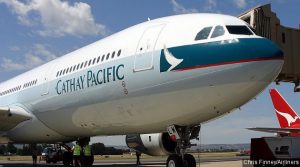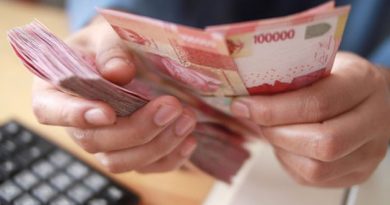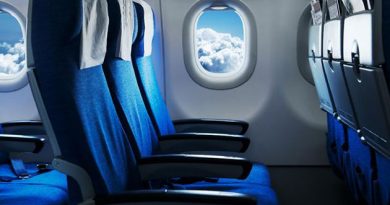Cathay Pacific’s CEO Has Some Broken Parts to Fix

Ten months into the top job and Cathay Pacific Airways Ltd. Chief Executive Officer Rupert Hogg’s to-do list hasn’t gotten any shorter.
While its cargo business and passenger traffic, especially premium travelers, are recovering, inflated wage costs and ever-increasing competition from Chinese rivals are issues he has to contend with. Among these, fuel-hedging bets gone awry top the list: Losses from miscalculated oil-price bets are probably more than double the airline’s net loss for 2017.
The carrier is expected to report a full-year net loss of HK$2.7 billion ($345 million) for 2017, after a first-half deficit of HK$2.05 billion, according to the median estimate in a Bloomberg News survey of five analysts. The Hong Kong-based airline has embarked on a three-year plan announced in 2017 that includes 600 job cuts to reduce costs and help turn its fortunes around.
1. Hedging Hit
Cathay’s fuel-hedging losses reached HK$6.45 billion in 2017, according to the median of four estimates in the survey, the fourth straight year of deficits.
Fuel is the largest component of an airline’s costs. Even though Cathay has cut the proportion of fuel it hedges, the effects linger because the contracts were locked in several years ago. Cathay should be able to reverse course to book a gain in 2019, after it shortened the contract period to two years from four and at lower estimated prices of oil, said Corrine Png, CEO of research firm Crucial Perspective Pte in Singapore.
2. Chinese Competition
Cathay faces fierce competition from across the border as Chinese mainland carriers have increased flight frequencies and added non-stop routes to the U.S. and Europe, making it less attractive for travelers to transit in Hong Kong.
Hainan Airlines Holding Co., China’s largest private airline, began direct flights to New York from Chengdu and Chongqing late last year. In addition, Cathay is constrained from increasing its own capacity because of limited landing slots at Hong Kong’s airport.
3. Higher Ground Costs
Hong Kong’s airport, Cathay’s home base, is adding a third runway to help ease congestion. Asia’s busiest international airfield has been increasing levies since September 2016 to help pay for its expansion, leading to higher expenses at Cathay for landing and parking. These fees were equivalent to 16 percent of full-year revenue in 2016, the highest level among some of Asia’s largest airlines.
4. Staff Productivity
Cathay trails its key Asian competitors for average revenue earned per employee. The airline has so far also been unsuccessful in trimming pilots’ compensation packages, which include housing allowances. Reducing employee expenses is essential because they are Cathay’s second-largest cost component after fuel, Png of Crucial Perspective said.
5. Cargo, Passenger Gains
Cathay is benefiting from global growth in air travel and freight, with cargo being an especially bright spot. Worldwide passenger demand, based on revenue earned per person per kilometer of travel, increased 7.6 percent last year, the International Air Transport Association said. Cargo traffic jumped 9 percent, more than double the pace in 2016.
Shares of Cathay rose 1.8 percent to HK$13.28 as of 10:05 a.m. in Hong Kong. The stock has advanced 9.6 percent this year, compared with a 1.1 percent gain for the city’s Hang Seng Index.
Courtesy : Bloomberg, WowKeren.com



